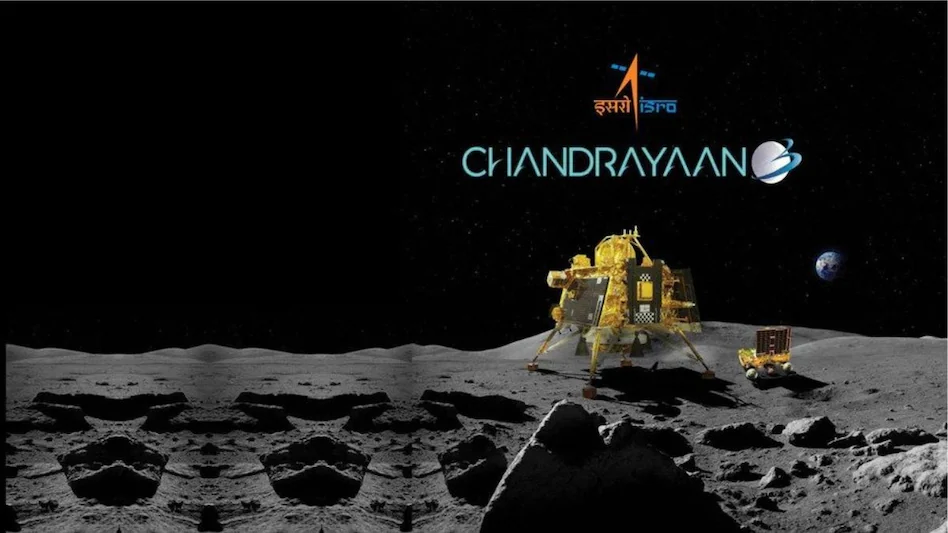A follow-up mission to Chandrayaan-2, Chandrayaan-3 aims to show that safe lunar landing and wandering are possible from beginning to end. It consists of both Landers and Rovers. From SDSC SHAR at Sriharikota, it will be launched using LVM3. The lander and rover combo will be supported by the propulsion module up to a 100 kilometer lunar orbit. Analysis of the spectral and polarimetric data of Earth taken from the lunar orbit is done by the Spectro-polarimetry of Habitable Planet Earth (SHAPE) payload aboard the propulsion module.
The goals of Chandrayaan-3’s mission are:
- To demonstrate a secure and gentle landing on the moon’s surface
- To showcase roving lunar rover technology
- To carry out in-situ scientific research.
Chandrayaan-3 Latest Landing News
Chandrayaan-3 Mission:
— ISRO (@isro) August 20, 2023
🇮🇳Chandrayaan-3 is set to land on the moon 🌖on August 23, 2023, around 18:04 Hrs. IST.
Thanks for the wishes and positivity!
Let’s continue experiencing the journey together
as the action unfolds LIVE at:
ISRO Website https://t.co/osrHMk7MZL
YouTube… pic.twitter.com/zyu1sdVpoE
Chandrayaan-3 Mission: The second and final deboosting operation has successfully reduced the LM orbit to 25 km x 134 km. The module would undergo internal checks and await the sun-rise at the designated landing site. The powered descent is expected to commence on August 23,… pic.twitter.com/1wOceuGejx
— ANI (@ANI) August 19, 2023
Anticipated Live broadcast
With the upcoming Chandrayaan-3 Mission, which is on track to make a soft landing on the moon, India’s effort to explore space achieves a tremendous milestone. With this accomplishment, India’s science, engineering, technology, and industry have made major strides forward, symbolizing our country’s advancements in space exploration.
Date and Time:
- August 23, 2023
- Starting from 17:27 Hrs. IST.
The live coverage:
- ISRO Website
- YouTube
- ISRO’s Facebook page
- DD National TV channel from 17:27 Hrs. IST on Aug 23, 2023.
The Chandrayaan-3 soft landing is a significant event that not only piques young people’s curiosity but also ignites their desire for adventure. As we collectively celebrate the prowess of Indian science and technology, it fosters a tremendous sense of pride and solidarity. It will aid in promoting a culture of creativity and scientific research.
As a result, all colleges and universities in the country are invited to take part in this historic occasion. Institutions are encouraged to actively promote this occasion among their teachers and students and to plan for LIVE streaming of Chandrayaan-3’s gentle landing on the premises.
The overall Specifications for Chandrayaan-3
| Sl No. | Parameter | Specifications |
|---|---|---|
| 1. | Mission Life (Lander & Rover) | One lunar day (~14 Earth days) |
| 2. | Landing Site (Prime) | 4 km x 2.4 km 69.367621 S, 32.348126 E |
| 3. | Science Payloads | Lander:
|
| 4. | Two Module Configuration |
|
| 5. | Mass |
|
| 6. | Power generation |
|
| 7. | Communication |
|
| 8. | Lander Sensors |
|
| 9. | Lander Actuators | Reaction wheels – 4 nos (10 Nms & 0.1 Nm) |
| 10. | Lander Propulsion System | Bi-Propellant Propulsion System (MMH + MON3), 4 nos. of 800 N Throttleable engines & 8 nos. of 58 N; Throttleable Engine Control Electronics |
| 11. | Lander Mechanisms |
|
| 12. | Lander Touchdown specifications |
|

